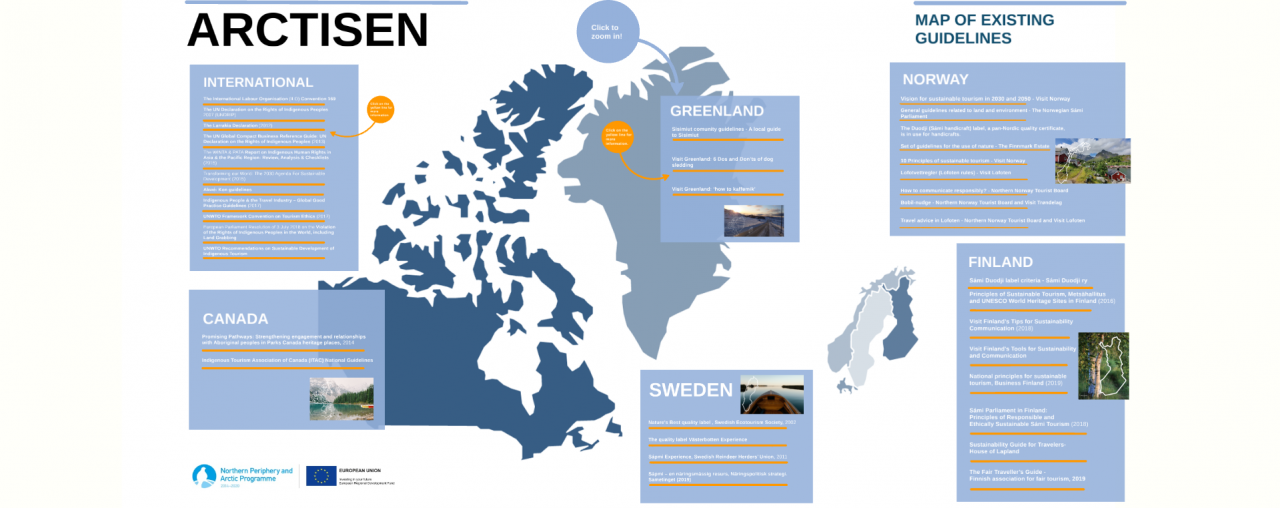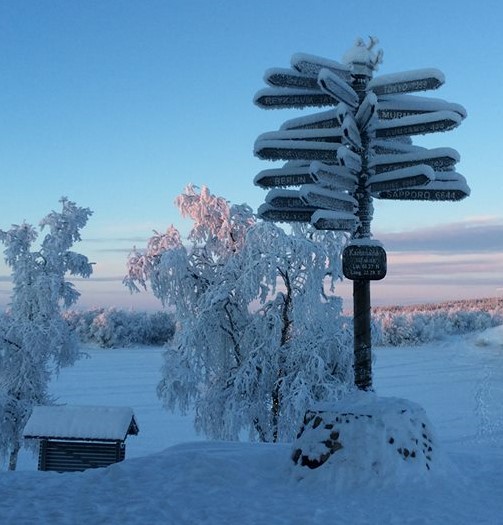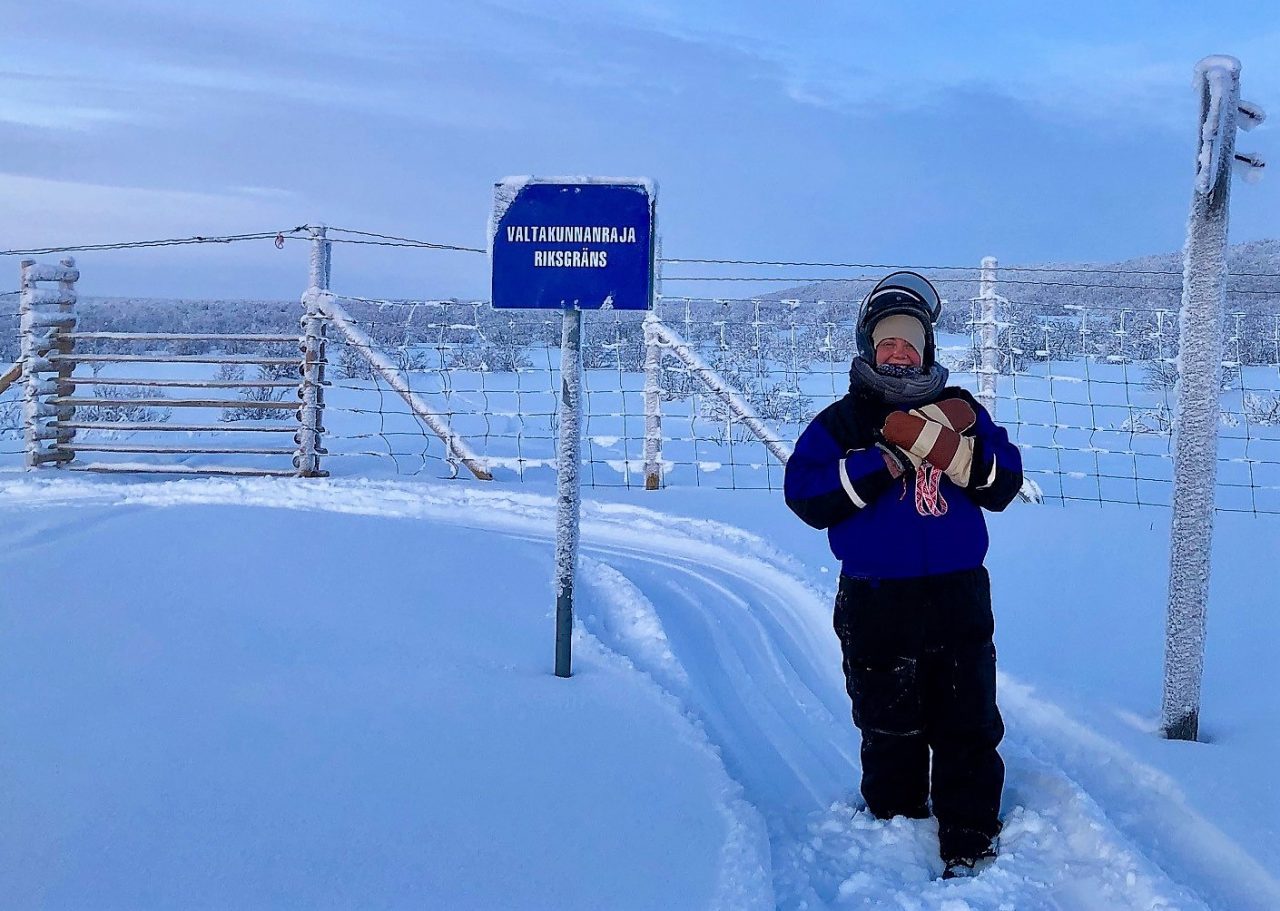Text: Monika Lüthje
In our previous blog post Kjell Olsen and Outi Kugapi discussed about guidelines and roadmaps for culturally sensitive tourism. They pointed out that local entrepreneurs are not waiting or hoping for new guidelines to run their tourism businesses in a culturally sensitive way. This approach is understandable: being part of the local context, these entrepreneurs know how to take the local cultures into account in a respectful manner in their products and services. They know, for example, how the local people use the nature and can plan their nature-based tourism activities without disturbing other activities, be it berry picking, hunting, reindeer herding, or anything else.
Instead of creating new guidelines, our project team dived into the sea of existing guidelines in the Arctic.

Map of existing tourism guidelines in the Arctic. Click the image to visit the Prezi-presentation of the guidelines – created by Suvi Autio.
We created a Map of Guidelines which shows how many organisations and local communities have been previously creating different kinds of guidelines for tourism. Why is that? For whom they are? If the locals do not seem to need these kinds of instructions and recommendations, an obvious answer is that the guidelines are for non-locals.
First, different kinds of seasonal tourism actors need guidance in order to be able to navigate in the local cultures in a respectful manner. In our baseline research in winter/spring 2019 – one year before the outbreak of COVID-19 – we found out that a growing number of outsiders had entered the tourism scene in the Arctic: foreign tourism companies were operating in the area and even local companies had to employ non-local guides and other non-local staff because there was not enough local work force. We also learned that many times these outsiders were the ones causing problems because they did not know about the local cultures – and maybe even did not care to learn. It is quite probable that once the pandemic is over and the number of guests will increase, the situation will be somewhat the same. Hence, guidelines can play an important role as they teach the newcomers what kind of tourism the local people want to have in their home areas and what kind of behavior is considered appropriate and inappropriate, and in that way diminish disturbance of the local cultures.

How to help visitors to make responsible choices? Photo credit: Emily Höckert
Second, tourists form another important group of outsiders who need guidance in how to behave in a respectful manner in tourism destinations. Based on our baseline research, their behavior can disturb and irritate local people in many ways and many times, probably, because of lack of knowledge and recognition of local cultures. Guidelines are an excellent way to communicate local wishes to the respectful, open minded visitors.
In our Map of Guidelines most guidelines are promoting sustainable, ethical or responsible tourism, not specifically culturally sensitive tourism as the term cultural sensitivity is quite new in tourism development. Many of the guidelines include, however, guidelines for cultural sensitivity. As the terms sustainable, ethical, responsible and culturally sensitive are quite abstract, the guidelines show what the abstract terms mean in practice. We hope that our Map of Guidelines can help different actors to navigate among different kinds of existing guidelines, which can offer inspiration for anyone working with tourism, including local companies.
You can read and learn more about the topic from ARCTISEN’s free online course.

Photo credit: Taina Vuolteenaho, Näkkälä Adventures
